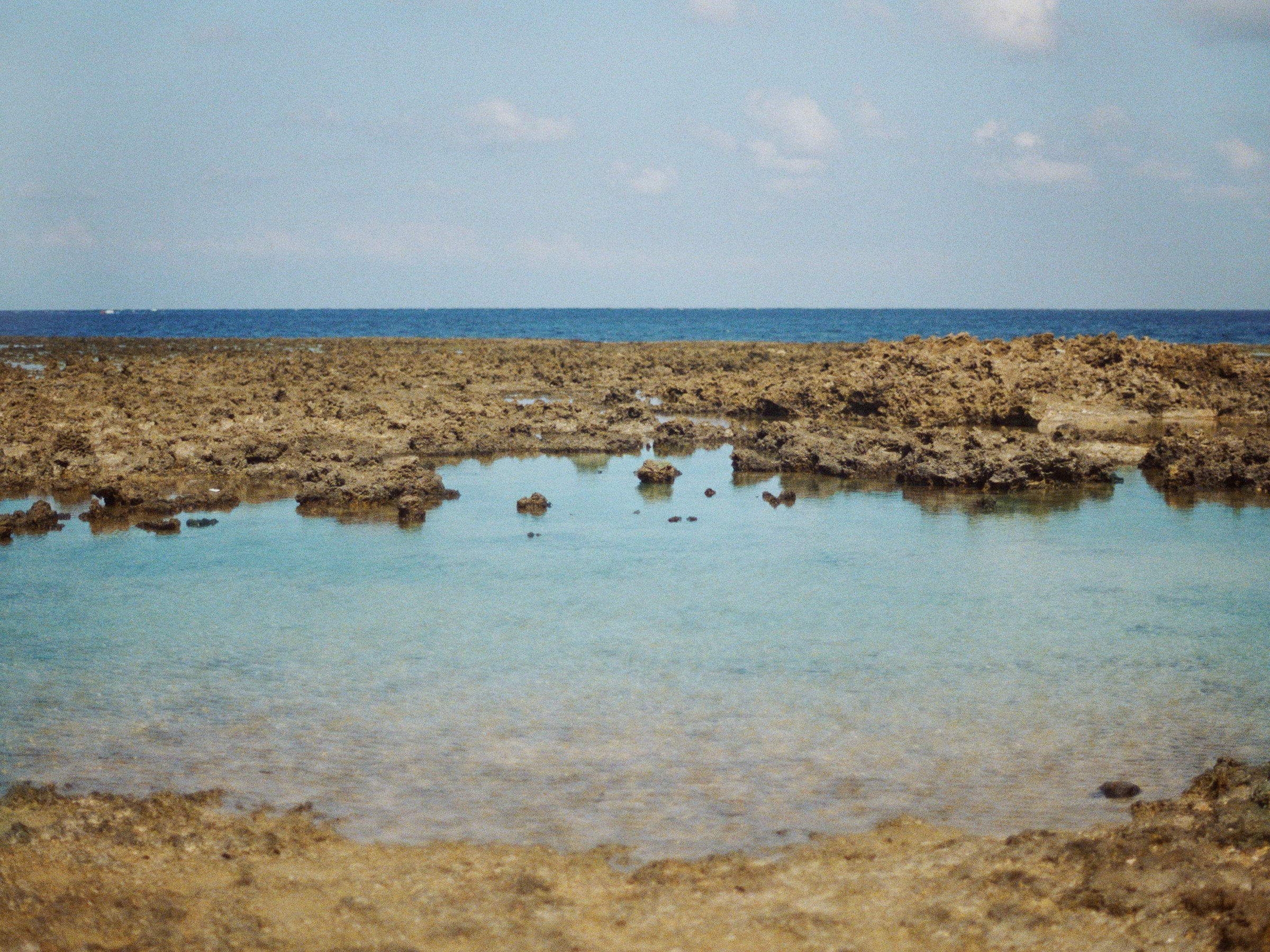Sustainability Glossary
Ref Glossary
We put sustainability at the core of everything we do. Here are some terms we use to talk about sustainability and what we do at Ref.
Anti-racism
Anti-racism is the active process of condemning racism in systems, structures, policies, and attitudes. It is based on people’s conscious efforts and actions to fight for equality for all on an individual and systemic level.
Biodegradable
Biodegradable is the ability for a substance or object to break down and return to the Earth naturally, usually via bacteria or other living organisms.
Bioplastic
Bioplastics are plastic materials produced from renewable biomass sources, like vegetable fats and oils, corn starch, straw, woodchips, sawdust, recycled food waste, and more. Bioplastics are usually derived from sugar derivatives, including starch, cellulose, and lactic acid.
Biopreferred
BioPreferred is a USDA program that identifies and promotes biobased materials, AKA materials composed primarily or entirely of natural stuff, rather than petroleum and other chemicals. We use a leather alternative that’s made mostly of cereals and grains, and that’s USDA BioPreferred.
Bluesign
Bluesign is a holistic system that works to ensure products are safe for the environment, workers, and customers. Bluesign works to approve chemicals, processes, materials, and products at every level of the supply chain--focusing its efforts on the dyeing & finishing stages. Learn more about it here.
By-product
When a secondary product is created incidentally in the process of manufacturing another product, it’s known as a by-product. Bovine leather is a by-product of the meat industry.
Carbon dioxide (CO2)
CO2 is a naturally occurring greenhouse gas in the atmosphere, concentrations of which have increased as a result of humans' burning of wood, coal, oil, and natural gas. A heavy colorless gas, CO2 is absorbed from the air by trees and plants in photosynthesis, a magical process that makes us want to marry trees and plants.
Carbon Footprint
A carbon footprint is a measurement of impact on the environment in units of carbon dioxide emitted. It can be calculated for a person, a product, a corporation, or even a country; everything from a cheeseburger to a plane ride has one. It is a way to measure one’s contribution to global warming.
Carbon Neutral
Carbon neutral refers to a company or individual that works to achieve net-zero emissions by reducing their footprint and balancing their greenhouse gas emissions with actions like carbon offsetting.
Carbon Offsets
Carbon offsets counteract greenhouse gas emissions that have already taken place. Because even if you do your best to live your most sustainable, environmentally-conscious, Walden Pond life, you’ll still have a carbon footprint. Offsets invest in projects that promote and expand carbon-reducing projects around the globe, reducing our overall emissions.
Chrome-free
Chrome-free tanning means that aldehydes or vegetable tannins are used to process leather, instead of Chrome 3 and other heavy metals. Chrome 3 isn’t considered toxic to humans, but it can produce something called Chrome 6 if certain additives combine with chromium 3 compounds during tanning. Chrome 6 is a human carcinogen that stays in the environment forever. Our tanneries follow industry best practices and adhere to a strict Restricted Substance List to ensure that there is no Chrome 6 in our stuff.
Circularity
Circularity goes beyond the linear model of take-make-dispose to create an economy that aims to restore itself. The idea is that instead of following a straight line, the model moves in a circular fashion so nothing gets thrown away. It focuses on three principles: design out waste and pollution, keep products and materials in use and regenerate natural systems.
Climate Change
Climate change refers to persistent changes in the atmosphere that last decades or more, and are caused directly or indirectly by human activity.
Climate Positive
Climate positivity goes beyond the achievement of net-zero carbon emissions to actually create an environmental benefit by removing more carbon dioxide from the atmosphere than you emit.
Closed Loop
Closed loop refers to a system in which products are designed, manufactured, used, and handled for circularity.
Conventional materials
Conventional means that the raw material may have the addition of pesticides and/or other chemicals during the growing, harvesting, or finishing processes.
Deadstock
Deadstock is old, leftover, and over-ordered fabric from other designers and fabric warehouses.
Deforestation
Deforestation is the act of clearing a forest to make room for non-forest use like logging, creating space for urban developments, or grazing. It directly contributes to climate change by releasing CO2 into the atmosphere and reducing the amount of carbon sinks available to capture greenhouse gases.
Downcycling
Downcycling is a form of recycling that still converts waste into new materials but usually at a lower value than it was before. For example, if you recycled fabric scraps into insulation.
Environmental Justice
Environmental justice means considering the social effects of climate change and ensuring an equitable distribution of environmental burdens and benefits. For example, we care about responsible chemical management and cleaner chemistry of our stuff not just to preserve and protect our natural environment and customers, but because to not do so directly threatens the health and safety of workers, and the communities surrounding our production facilities. It's our responsibility to ensure we do what we can to reduce harm and amplify prosperity through our shared environment.
Fair Trade
Fair Trade Certified products undergo rigorous social, environmental, and economic standards that ensure that the people making the products work in safe conditions, protect the environment, build sustainable livelihoods, and earn additional money to empower and lift up their communities.
Flax
Flax is a flowering plant, Linum usitatissimum, that can be used in a variety of ways including to make textiles, more commonly known as linen.
Global Warming
Global warming is the long-term increase in the overall temperature of Earth’s atmosphere in comparison to pre-industrial levels (1850-1900). It is mainly due to human activities like the burning of fossil fuels, that pump carbon dioxide (CO2), methane, and other greenhouse gases into the atmosphere.
Greenhouse effect
The greenhouse effect is the process that raises the temperature of air in the lower atmosphere due to heat trapped by greenhouse gases, such as carbon dioxide, methane, nitrous oxide, chlorofluorocarbons, and ozone. Human activities—primarily the burning of fossil fuels and clearing of forests—have intensified the natural greenhouse effect, causing global warming.
Greenwashing
Greenwashing is the process of falsely conveying a product, service, or company as environmentally friendly without providing accurate information to substantiate the claims.
Hazardous chemicals
A hazardous chemical is any chemical that can cause a physical or health hazard.
HIGG Index
The HIGG Index is a set of tools that were developed by the Sustainable Apparel Coalition (SAC). It enables brands, retailers, and facilities to accurately measure and score a company or product’s sustainability performance. Learn more about it here.
Insetting
Insetting is a type of offsetting focused directly in the supply chain or in the geographic area the emitting activity took place.
Leather Working Group
Leather Working Group (LWG) is a multi-stakeholder initiative that is dedicated to pushing for environmental best practices throughout the leather supply chain. LWG aims to improve the environmental impact of the leather industry by assessing and certifying leather manufacturers. LWG looks at different aspects of leather’s environmental impact from chemical and water management, greenhouse gas emissions, hide traceability, etc and more. Learn more about LWG here.
Leather Impact Accelerator
The Leather Impact Accelerator (LIA) is a framework that consolidates industry tools and enables leather supply chain members–from farmers to retailers–to contribute to a more responsible leather supply chain.
Linear Economy
The linear economy traditionally follows a straight line step-by-step process of “take-make-dispose,” which means that raw materials are collected, transformed into products that are used, and then disposed of once they are no longer needed.
Life-cycle assessment (LCA)
Life-cycle assessment is a methodology that is used to assess the environmental impacts associated with all the stages of a product, process, or service. It usually starts with the raw material extraction used to create the product and ends with how the product is disposed.
Living Wage
A living wage is a wage rate that provides a worker with an acceptable standard of living within the context of the relevant social, cultural, economic expectations. Living wages provide the means for an individual to purchase goods and services like food, energy, education, housing, transportation, health care, and are key to ending cycles of poverty that have lasted for generations.
Manufacturing Restricted Substance List (MRSL)
Manufacturing Restricted Substance List (MRSL) is a list of chemicals that are restricted in the chemical formulations used in raw material and manufacturing processes.
Materials Innovation Initiative
The Material Innovation Initiative is fast-tracking innovation in order to end the use of animal-based materials. They’re doing this by improving the sustainability of existing fibers, such as synthetics and cellulose, and seeding new innovations in plant-based and lab-grown materials.
Microfiber Pollution
Microfiber pollution happens when clothes made with plastic shed tiny pieces of plastic called microfibers. Microfibers are too small to be filtered out by waste treatment plants, so they end up in our waterways and oceans by the billions. Once in the ocean, they act as pollution magnets that marine animals mistake for food, endangering aquatic life, and potentially ending up in our food.
Next Generation Materials
Innovative materials designed to replace animal-based materials are known as next generation, or next-gen, materials. These materials include more sustainable versions of existing fibers, such as synthetics and cellulose, plus new innovations in plant-based and lab-grown materials.
Oeko-Tex Standard 100
Oeko-Tex Standard 100 is one of the world's best-known labels for textiles tested for harmful substances. Find out here what STANDARD 100 means.
Organic
Organic refers to raw materials that are not genetically modified and are grown without the use of chemical pesticides and insecticides. Organically grown cotton, in particular, refers to cotton that is grown without the use of toxic chemicals and pesticides and helps sustain the land. Certain third-party organizations, like Global Organic Textile Standard (GOTS) and Organic Content Standard (OCS), help verify that materials and processes are truly organic.
Petrochemicals
Petrochemicals are any of a large group of non-fuel chemicals derived from petroleum and natural gas. They’re used for a variety of commercial purposes and are a main ingredient in most plastics.
Plant-Based Leather
Plant-based leathers are a type of vegan leather. Each material in this category is made differently, but they all contain some element of plant fiber or oil. A lot of plant based leathers are still based on polyurethane chemistry, so plants plus plastic, but there are innovations to bring fully plant-based materials to market soon.
Recycling
Recycling converts waste into something new. This can be any type of waste, but in the fashion industry, it mainly refers to recycling fabrics. There are two main types of recycled materials–pre & post-consumer recycling. Pre-consumer recycling refers to recycling waste that was created during the manufacturing process. Post-consumer recycling is recycling something that has previously been used by a customer–like your old pair of jeans.
RefScale
RefScale is our internal lifecycle tool. It tracks the carbon and water footprint of our stuff. Then we calculate how Reformation’s products help reduce these impacts compared with most clothes bought in the US. We share this information on every product page of our website and tell you exactly what impact each garment has on the environment. Check out our RefScale page for more information.
Regenerated Leather
Regenerated leather is a material made from leather scraps that undergo a production process to compress and bond the recycled fibers.
Regenerative Fibers
Regenerative fibers refer to animal and plant-based fibers that are produced using farming practices that help reverse climate change. The actual farming practices can vary, but the focus is on increasing ecosystem health and combating global warming through carbon sequestration.
Regenerative Ranching/Grazing
Regenerative ranching refers to the practice of building soil health by managing livestock in a restorative way. This means land and livestock are cultivated in a way that supports human and ecosystem health, farm profitability, and community and food system resilience. Regenerative ranching/grazing is one approach of regenerative agriculture, a type of agriculture that aims to rejuvenate agricultural landscapes and communities, not degrade or just sustain them. Regenerative Leather is a by-product of cattle raised on farms practicing regenerative ranching/grazing.
Responsible Leather
Responsible leather is a leather industry shift where by-product hides are sourced responsibly, and brands and brand partners take ownership to improve the leather supply chain collectively. We recognize the environmental implications of using cow hides and are working to minimize the ecological and social impacts through supply chain transparency, strict zero deforestation and conversion policies, implementation of animal welfare policies, and following tanning best practices. We’re working with industry leaders from farm to finished hide to help move the leather and meat industries in a more sustainable direction.
Restricted Substance List
Restricted Substance List (RSL) is a list of chemicals that are restricted in finished consumer products. It tests products after they are made to confirm that there are no hazardous or toxic substances.
Shoe Recycling
Shoe recycling is the process of converting discarded shoes into new products. Shoes often contain many materials, which makes recycling them challenging. The variety of resultant recycled products depends on the material content of the shoes, and whether the waste streams they are sent to recycle, upcycle, or fill for downcycling.
Social Justice
Social justice is the belief that everyone deserves equal rights, opportunity, and treatment regardless of their backgrounds and experiences.
Supply Chain
The supply chain is the entire link connecting the sourcing of raw materials, the finishing of materials, the manufacturing of those materials into clothes all the way to the distribution to the end consumer.
Supply Chain Tiers
Every level of the supply chain is broken down into tiers that describe the different facilities and processes:
- Tier 1 is the finished goods assemblers & subcontractors.
- Tier 2 covers all the steps that are needed to prepare the fabric for clothing production including dyers & printers; finishers, weavers, and knitters.
- Tier 3 is the fiber production. It includes fiber producers, spinners, recycled material collector/ process.
- Tier 4 is where the raw materials are cultivated or sourced. It can be farms, forests, or ranches.
Sustainable Apparel Coalition
Sustainable Apparel Coalition is a multi-stakeholder initiative that is committed to measuring and improving social and environmental sustainability impacts within the apparel industry. Learn more about it here.
Sustainable Shoes
Shoe sustainability is the practice of making, wearing, and disposing of footwear without depleting our natural resources or contributing to other negative ecological impacts like climate change. Shoes present a larger sustainability challenge than apparel given their more complex supply chains and varied material lists.
Sustainability
In 1987, the UN defined sustainability as our ability “to meet the needs of the present, without compromising the ability of future generations to meet their own needs.” These needs are directly or indirectly associated with the natural environment--so it’s all about finding a balance between humans and nature that allows us to meet our needs.
Synthetics
Synthetics are fibers that are made by humans through chemical processes. Synthetics tend to be derived from nonrenewable resources like fossil fuels. Some of the most common synthetic fibers are nylon, polyester, and spandex.
Textile Exchange
Textile Exchange is a global non-profit that works to inspire and prepare people to accelerate sustainable practices in the textile value chain. Learn more about it here.
Traceability
Traceability is understanding when, how, and by whom a product was made. It serves as a form of accountability and helps verify claims and important aspects like animal welfare and fair labor throughout the supply chain.
Traceable Leather
Traceable leathers are leathers that are barcoded or DNA coded to allow for reference back to their source farm. These hides can also be traced by their paper purchase order.
Transparency
Transparency is the practice of openly disclosing information regarding operations.
Upcycling
Upcycling is a type of recycling that transforms waste into new materials or products that are greater in value. A common example of this is recycling fabric scraps into new yarn--this allows for waste to be turned into a new product, and keep circulating in the fashion system.
Vegan leather
Vegan leather is an alternative to traditional leather that contains no animal products or by-products. Right now, most vegan leather is made with petrochemical derivatives–AKA plastic–but there's a lot of work happening to innovate plant-based, sustainable vegan leathers that can be made to scale.
Virgin materials
Virgin materials are materials that are sourced directly in their natural form. Manufacturing products using virgin materials use much more energy and depletes more natural resources, as opposed to producing goods using recycled materials.
Viscose
Viscose, sometimes known as rayon, is a semi-synthetic cellulosic fiber that is made from natural sources of cellulose, like wood. It comes from natural sources but requires extensive processing to make it into a fiber.
Water Neutral
Water neutral means that one balances the water footprint of an activity by investing in projects that restore the same volume of water.
Wind Energy
Wind energy refers to harnessing the power of wind to create electricity. The energy is usually captured by using modern wind turbines that convert wind’s kinetic energy into mechanical power. A generator inside of the wind turbines is what physically converts the mechanical power into electricity that can be used to power homes and buildings.
Zero Discharge of Hazardous Chemicals (ZDHC)
ZDHC is a group of apparel and footwear brands and retailers working together to lead the industry towards zero discharge of hazardous chemicals. Their mission is to enable brands and retailers in the textile, apparel, and footwear industries to implement sustainable chemical management best practices throughout the value chain. Learn more about it here.


